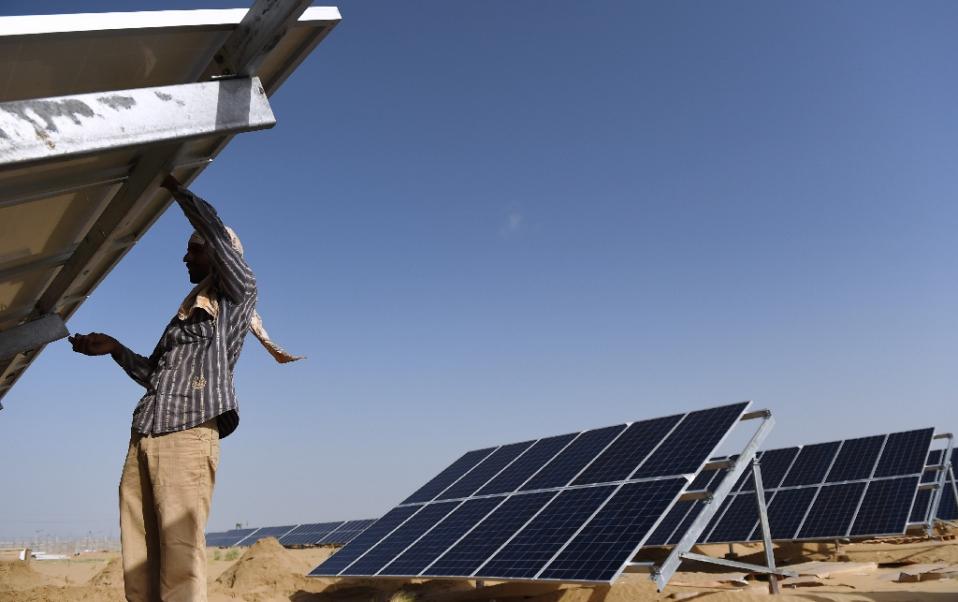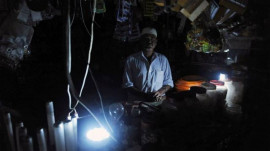
ISLAMABAD:
The National Electric Power Regulatory Authority (Nepra) has announced a further reduction in upfront tariff for solar power plants, a decision that will displease foreign investors and lead to loss of investments worth billions of dollars.
At a public hearing conducted by the regulator, foreign investors warned that they would withdraw their investments in solar power projects if Nepra pushed ahead with the plan to cut tariff on this renewable energy source.
Power ministry responsible for inflated bills, insists NEPRA
They called for continuing with the 2015 solar power tariff for one more year, arguing it was unfair to slash the price based on the performance of the Quaid-e-Azam solar plant for four months. Nepra had set the upfront tariff at 14.15 cents per unit for 2015.
Turning down the investors’ request, the regulator on Wednesday announced a major cut in solar tariff for 2016.
In a statement, Nepra said in order to promote clean energy and ensure affordable energy to the consumers, the new upfront solar tariff would be 11.35 to 11.53 US cents per kilowatt-hour for the northern region and 10.72 to 10.89 cents per kWh for the southern region covering projects of between 1 and 100 megawatts.
In an attempt to take advantage of declining solar photovoltaic cell prices, Nepra said it initiated proceedings for determining the new upfront solar power tariff. After following a transparent process, it determined the new tariff, which would not only create a balance between the interests of consumers and investors but will also encourage investment.
The first upfront tariff was set in January 2014 for a total capacity of 50MW with project sizes of 1 to 10MW. At that time, the levelised tariff was fixed at 16.30 cents per kWh for south and 17 cents per kWh for north. The tariff period ended on July 20, 2014.
On January 22 this year, Nepra announced the second upfront tariff for project sizes of 1 to 100MW. The levelised tariff was set in the range of 14.15 to 15.02 cents per kWh for three project sizes - 1 to 20MW, 21-50MW and 51-100MW - in the southern and northern regions. The validity period for the tariff will end on December 31, 2015.
Some important features of the new tariff include the built-in degradation impact in tariff, a revised capacity utilisation factor and sharing mechanism on generation of excess energy.
Previously, annual degradation of 0.7% from the 2nd to the 25th year was allowed. Now better quality solar modules with 0.5% annual degradation are available in the market but their cost is higher.
Besides lower degradation, such modules also ensure a better power output over the life of the project. Therefore, Nepra has decided to approve 0.5% annual degradation.
The capacity utilisation factor (CUF) is a key driver of the solar project’s economics and a good quality solar photovoltaic system will be capable of achieving higher CUF.
Power consumers get Rs1.81 per unit refund for October
For the previous upfront tariffs, Nepra used 17.5% CUF for the southern region and 16.78% for the northern region and the tariff was based on these capacity utilisation factors. Now, the authority has decided to enhance CUF to 18% for the south and 17% for the north for tariff calculation.
“The new tariff will provide certainty to the investors willing to install solar plants in the form of tariff structure, returns and short processing time. The choice to opt for the upfront tariff will be available from January 1, 2016 and will remain valid for six months,” the regulator said.
Published in The Express Tribune, December 17th, 2015.
Like Business on Facebook, follow @TribuneBiz on Twitter to stay informed and join in the conversation.


































































COMMENTS (3)
Comments are moderated and generally will be posted if they are on-topic and not abusive.
For more information, please see our Comments FAQ